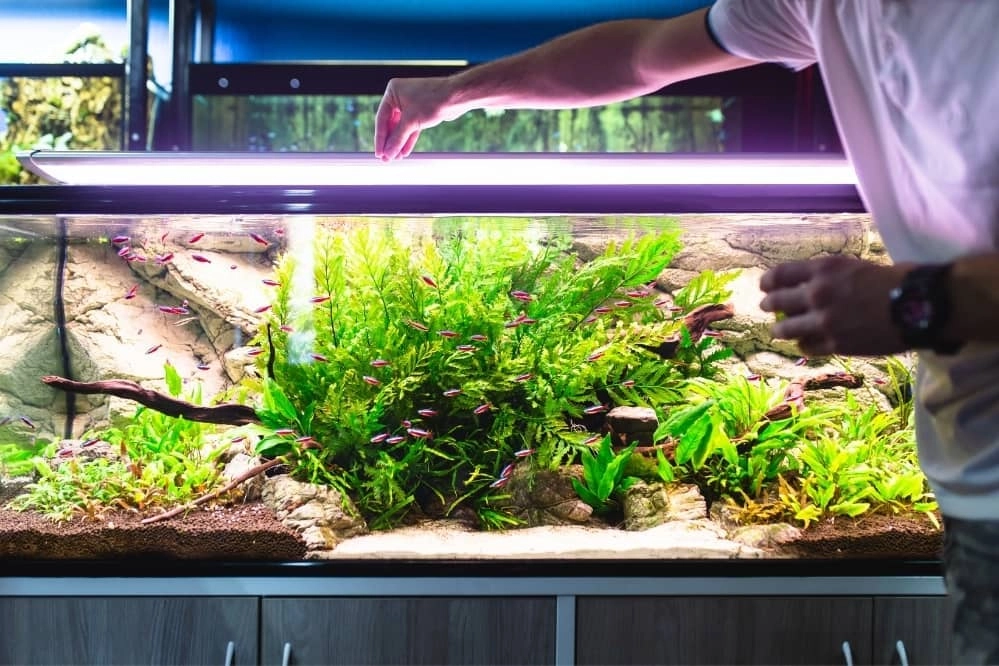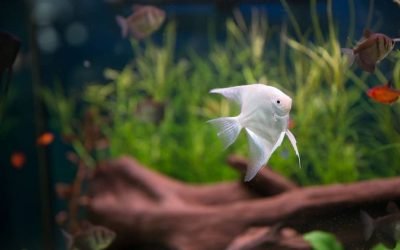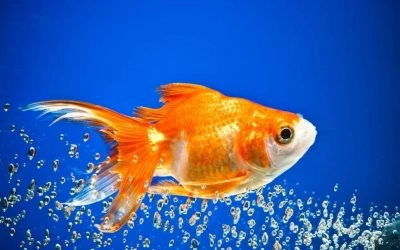Should a Fish Tank Be Covered?

If you’ve recently become the proud owner of a fish, chances are you have a lot of questions regarding the proper care of your new pet. From the type of food it can eat to how often you should clean your tank. For many people, one of those questions may also be “Should my fish tank have a lid?” It’s a valid question that many people don’t know the answer to—especially first time fish owners. If you’re one of these people and are curious about whether or not you should keep your new fish tank covered, keep reading.
Is an Aquarium Cover Essential?
The short answer to this question is yes, your fish tank should always have a lid on it. There are a variety of reasons why you should always keep your tank covered, and it starts with the fact that, believe it or not, a fish could easily jump out of its tank. If you are keeping other aquatic animals in your fish tank that can also easily escape—for example, snails—they can escape out of the tank and may be unable to get back in, thus meeting a grim fate.
However, this isn’t the only reason why. Dust and debris can get into the tank, which will not only put your fish at risk but also means more cleaning for you. Anything from pet hair to even bugs can eventually make their way into your fish tank and put your fish at risk.
Another reason your fish tank needs a lid is so that you do not have to find yourself constantly filling up your water tank. Without a lid, the water tends to evaporate much quicker, which in turn leaves you having to fill it up more often than not.
If you have other pets in your home, not having a lid on your fish tank means giving them easy access into the tank. Cats, birds, and even dogs can make their way toward the tank and either stick their paws in the tank or knock it over by accident. Birds may even leave their droppings in and around the tank. All in all, be sure to not only keep other pets away from the tank as often as possible but keep a lid on at all times to prevent these situations from happening.
Three Types of Aquarium Covers
Now that you know how important it is to make sure your fish tank is covered, your next step should be to find the right cover for your tank. There are a variety of different types of lids out there but the one you should settle on all depends on the shape and size of your tank.
1. Glass Lids
Glass lids tend to be the most common because of the fact that they are versatile and sturdy. Even better, glass lids cover the entire fish tank top, which in turn reduces water evaporation and keeps unwanted debris out of your aquarium.
2. Canopies
Those who are looking for a more aesthetically pleasing lid for their fish tank may want to consider a canopy. Canopies are a decorative top that provides a cover for your fish tank as well as housing one or more lights in it. These lids are usually made out of wood that can be painted to match aquarium sand should you have any in your tank. These lids may not be as effective as glass lids but they help your aquarium blend in with your room décor and can generally spruce up the overall look of the fish tank itself.
As beautiful as they may be, canopies tend to be a bit costly—more so than other lids—and can sometimes even cost more than the fish tank itself.
3. Hoods
Hoods are a plastic cover for fish tank and are used to cover the light fixture on top. Unfortunately, these types of covers don’t fit as well as glass lids do and can in turn, cause the water to evaporate in the tank. Hoods are usually made out of plastic and are more cost-effective than other types of fish tank lids.
Does a Fish Tank Lid Need Holes?
Although your fish tank doesn’t need holes in it, it’s perfectly fine if you choose to add some. Holes in your fish tank lid aren’t vital because the water circulation from your filter is enough to break the surface tension and provide oxygen for your fish tank.
If you are especially worried about getting your fish the oxygen they need, you can always add in some plants to your tank, which can help oxygenate your fish tank. Another alternative to adding holes to the lid would be to simply leave a small space between the lid and the water surface as a way to allow extra oxygen to enter and leave the tank. All you need is about an inch of space for air to get in as this is enough space where the fish or other animals in the tank won’t be able to escape.
Should You Cover a Fish Tank at Night?
Although some people choose to cover their fish tanks to prevent light from shining into the tank while they sleep, it isn’t necessary. However, if you have fish that can jump or any other type of creature in your tank that can escape, it might be a good idea to keep your fish tank covered. Otherwise, you may wake up in the morning to find your tank empty.
Many people tend to cover their fish around colder seasons to make sure their fish stay at a comfortable temperature. If you do want to make sure your fish stay warm, you can always purchase a water heater to add into the tank.
During the winter, people also tend to turn up the heat in their home. The heat can cause the water in the tank to evaporate much quicker, so a lid is usually a way to prevent this from happening. The same can be said about fish tanks that use a powerful lighting system that can cause the water to evaporate as a result of the heat from the light.
Whatever you do, be sure not to use blankets or towels as a lid for your fish tank as this can cause your fish to suffocate.
Conclusion
At the end of the day, a fish tank lid isn’t necessary for your aquarium, but it will certainly do more good than harm to have one. Fish tank lids are a great way to keep your fish safe, warm, and allow them all the oxygen they need to survive in a happy environment.
If you have decided to add a fish tank lid to your aquarium, keep in mind that you have a variety of options to choose from. The particular lid you choose should all depend on the type of tank you have as well as the type of fish you have. If you have any questions, you can always visit a pet store and ask a professional for advice on choosing the right lid.




0 Comments